
Fundamentals
The concept of Modern Care, when viewed through the profound lens of textured hair heritage, extends beyond simple definitions of contemporary product use or scientific advancement. It represents an intentional engagement with hair health, an active pursuit of its vitality, and a recognition of its deep cultural meanings. At its essence, Modern Care is the thoughtful application of current understanding, whether derived from scientific inquiry or lived experience, to nourish, protect, and style textured hair in ways that honor its unique structural integrity and rich ancestral lineage. This understanding moves past fleeting trends, instead rooting itself in the enduring dialogue between biological specificity and historical practices.
For those embarking on a journey into informed hair care, the starting point often involves recognizing that textured hair possesses distinct characteristics. These qualities, including varying curl patterns, densities, and porosities, influence how hair interacts with moisture, heat, and external elements. Historically, this understanding was passed down through generations, through observation, communal grooming rituals, and the discerning use of natural elements gathered from the land. Modern Care, then, acknowledges these elemental truths, translating ancient wisdom into an accessible framework for daily routines.
Modern Care represents a conscious, informed approach to textured hair health, deeply attuned to its historical roots and biological particularities.
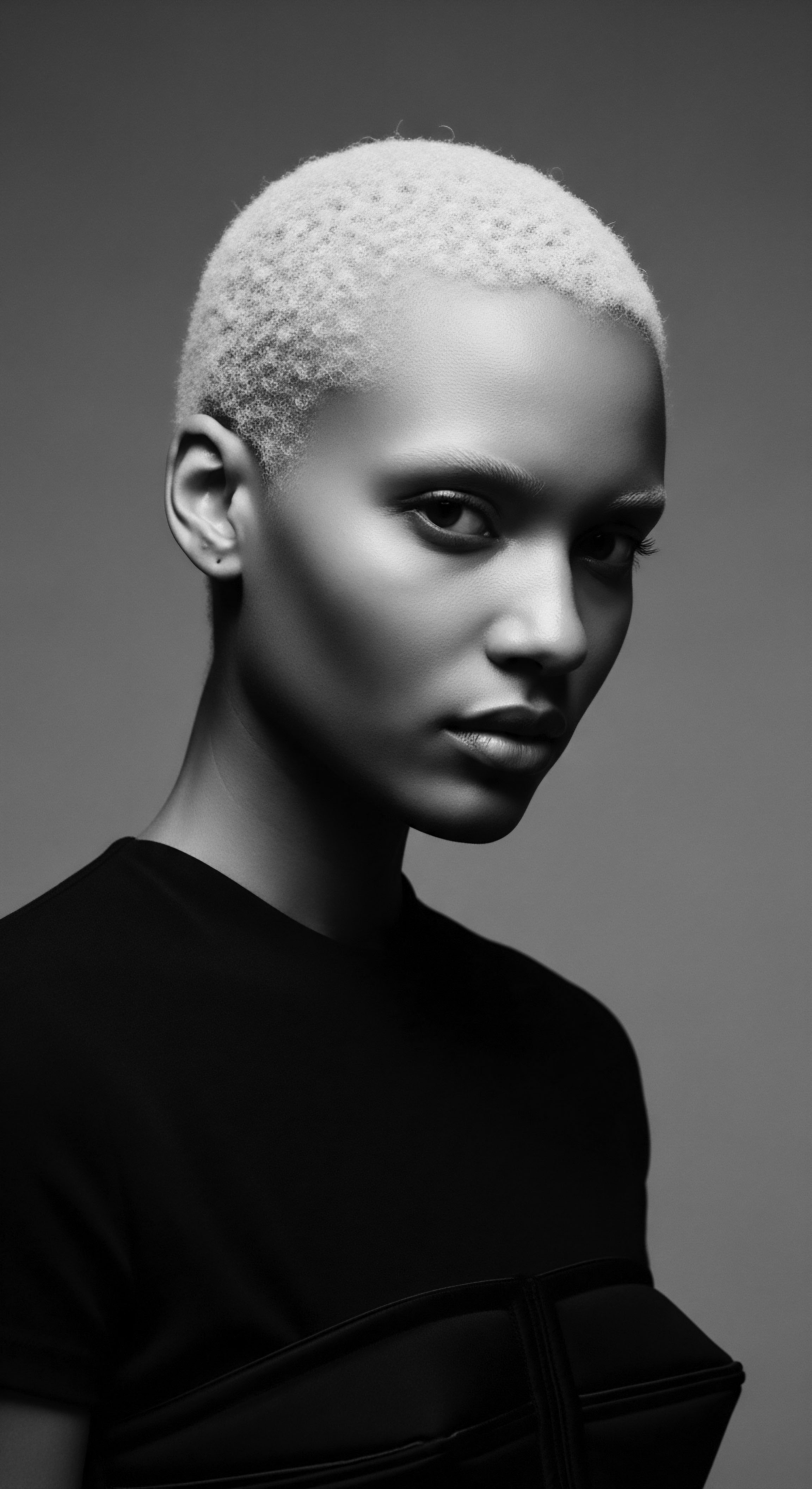
Echoes from the Source ❉ Hair’s Elemental Biology
Our exploration of Modern Care begins with the fundamental building blocks of hair. Each strand, regardless of its curl pattern, is a biological marvel, a protein filament primarily composed of keratin. The shape of the hair follicle, nestled within the scalp, largely dictates the curl of the hair shaft. For textured hair, these follicles often possess an elliptical or oval shape, leading to a hair strand that grows in a spiral or helical pattern.
This inherent structure, while beautiful and resilient, also presents unique considerations for care, such as managing moisture retention and preventing tangling. These are principles instinctively known by ancestral communities, who developed methods to mitigate these challenges through practical application and collective knowledge.
Early care practices, long before the advent of industrial products, relied on a deep connection to the natural world. Ancestors utilized what the earth provided, employing plant-based oils, butters, and clays to cleanse, condition, and protect their hair. The choice of ingredient often stemmed from its observable effects on hair, like the softening properties of shea butter or the cleansing action of certain plant extracts. These foundational approaches to moisture, protection, and gentle handling laid the groundwork for what we now categorize under the umbrella of modern care, albeit with contemporary tools and scientific explanations.

Traditional Hair Care Elements
The principles of textured hair care, foundational to Modern Care, found their genesis in ancestral practices. These methods, born of necessity and deep environmental knowledge, addressed the core needs of hair with ingenuity and resourcefulness.
- Moisture Sealants ❉ Natural butters, such as shea butter and cocoa butter, or various plant-derived oils, were routinely applied to coat hair strands. This process prevented excessive water loss from the hair shaft, a crucial step for coiled textures that tend to be naturally drier.
- Cleansing Agents ❉ Certain clays, plant ash, or fermented liquids served as gentle cleansers. They removed impurities without stripping the hair of its vital lipids, maintaining a healthy scalp environment conducive to growth.
- Protective Styling ❉ Braiding, twisting, and coiling hair close to the scalp minimized exposure to environmental stressors. These styles reduced breakage and prolonged periods between manipulation, preserving the hair’s integrity.
- Detangling Tools ❉ Fingers, wide-toothed combs crafted from natural materials, or even carefully selected twigs were employed for gentle detangling. This mindful approach prevented damage to fragile hair strands.

The Language of Hair ❉ An Ancient Lexicon
Beyond its biological function, hair in many African societies served as a sophisticated visual language. Hairstyles conveyed a wealth of information, from a person’s age, marital status, or tribal affiliation to their social standing, wealth, or even spiritual beliefs. Specific patterns and adornments acted as symbols, communicating narratives without spoken words.
This deep cultural understanding underscores the enduring significance of hair beyond mere appearance, establishing it as a living archive of communal and individual identity. Modern Care, then, interprets this ancient lexicon, seeking to understand the enduring meaning behind contemporary care practices.
The very act of hair grooming was often a communal ritual, an opportunity for social bonding and the transmission of knowledge. Mothers, aunties, and elders would meticulously tend to the hair of younger generations, sharing techniques, stories, and the wisdom of their ancestors. This communal aspect of care speaks to the collective heritage embedded in hair practices, where the physical act of grooming intertwined with the preservation of cultural memory. The meaning of Modern Care gains depth when we consider this historical precedent of collective engagement and intergenerational learning.
| Practice Hair Oiling |
| Traditional Application Using shea butter, palm oil for moisture and sheen. |
| Modern Care Parallel/Understanding Application of emollients to seal moisture, enhance elasticity. |
| Practice Protective Braiding |
| Traditional Application Cornrows, twists for preservation and communication. |
| Modern Care Parallel/Understanding Low-manipulation styles to prevent breakage and retain length. |
| Practice Communal Grooming |
| Traditional Application Social gatherings for styling and knowledge sharing. |
| Modern Care Parallel/Understanding Shared routines, community support, and product exchange. |
| Practice These ancestral rhythms echo through current practices, demonstrating how profound care transcends time. |

Intermediate
The journey towards understanding Modern Care deepens as we consider its historical evolution, particularly in the context of diasporic Black and mixed-race communities. The meaning of hair care transformed dramatically under oppressive systems, shifting from a celebratory practice of identity to a tool of survival and, later, resistance. Modern Care, therefore, encapsulates the ongoing dialogue between ancestral memory and the adaptation to new realities, reflecting the ingenuity and resilience embedded in textured hair experiences.

The Tender Thread ❉ Survival and Adaptation
During periods of enslavement and subsequent racial discrimination, the physical and cultural landscape of hair care underwent profound changes. Forced migration stripped Africans of their traditional tools, ingredients, and the communal spaces where hair rituals flourished. Enslaved individuals often had their heads forcibly shaved upon arrival, a dehumanizing act aimed at erasing their identity and severing ties to their ancestral homes. Yet, even under these harsh conditions, hair care persisted as a quiet, powerful act of defiance and cultural preservation.
Enslaved people resourcefuly adapted, employing whatever materials were available to tend to their hair and scalps. They utilized natural elements found on plantations, such as clay, animal fats like bacon grease or butter, and even axle oil, seeking to maintain hair health and a semblance of dignity. These practices were not just about hygiene; they were subtle assertions of selfhood in a world determined to deny their humanity. The ingenuity displayed during these times forms a critical aspect of Modern Care’s historical lineage, showcasing adaptability and perseverance.
Hair care became a quiet act of resistance and cultural preservation, reflecting resilience amidst profound oppression.

The Art of Subterfuge ❉ Hair as a Silent Messenger
The strategic deployment of hair care as a tool for communication during enslavement provides a powerful example of enduring ancestral wisdom. In a time when written communication was largely forbidden and dangerous for enslaved people, intricate hairstyles became a covert means of conveying vital information. Historical accounts describe how women in Colombia, and potentially elsewhere, braided messages and maps into their cornrows to aid in escape attempts.
These patterns, seemingly innocent to the uninitiated, held coded instructions for escape routes, rendezvous points, or locations of water sources. The ingenuity of this practice speaks volumes about the creative ways marginalized communities preserved their lives and identities.
This remarkable aspect of textured hair heritage highlights a profound truth ❉ care extends beyond superficial appearance to encompass survival, communication, and deep cultural memory. The communal activity of braiding, once a space for bonding and identity reinforcement in Africa, adapted into a network of clandestine communication and mutual aid within the diaspora. Modern Care, therefore, respects this hidden layer of history, understanding that textured hair carries not just genetic information, but also the echoes of collective struggle and liberation.
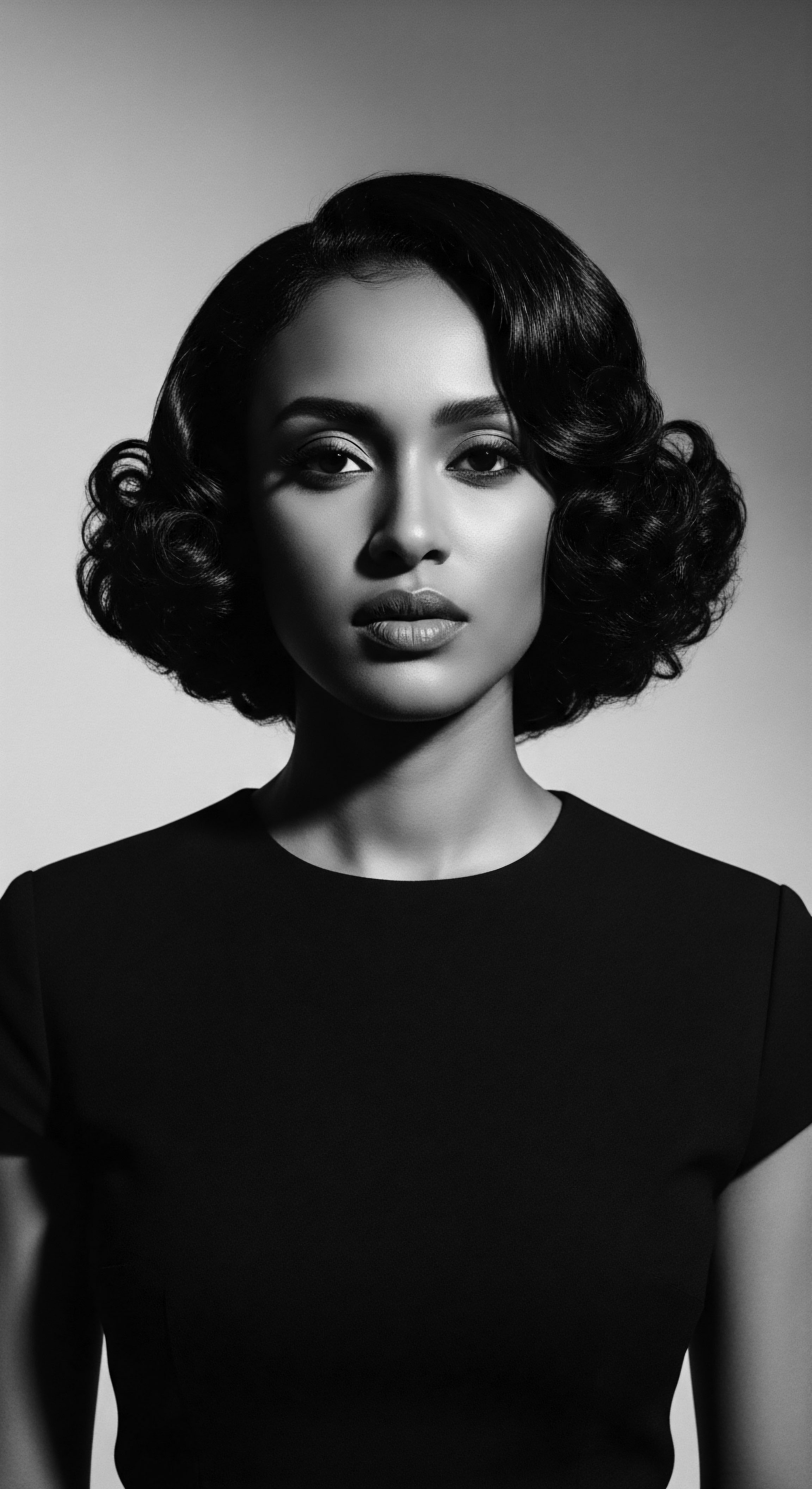
A New Dawn ❉ Entrepreneurship and Identity
The post-emancipation era saw the emergence of Black entrepreneurs who recognized the unmet needs of their communities regarding hair care. These trailblazers, often women, created products and established businesses that not only addressed hair health concerns but also provided economic opportunities and community hubs. Figures like Madam C.J. Walker and Annie Turnbo Malone, both formerly enslaved parents’ children, built empires from their knowledge of Black hair, offering specialized treatments and establishing schools that trained thousands of women.
Madam C.J. Walker’s “Walker System” emphasized scalp health and hygiene, offering shampoos, conditioners, and pressing oils tailored for Black women’s hair. Similarly, Annie Malone’s Poro College provided not just cosmetology training but also served as a social and educational center where Black organizations could meet during segregation.
These pioneering efforts represent a significant chapter in the evolution of Modern Care, demonstrating how self-determination and tailored solutions can emerge from deeply rooted needs and cultural understanding. Their legacies continue to shape the Black hair care industry, which has grown to be a trillion-dollar market, underscoring the enduring demand and inherent value of culturally specific hair care.
| Figure Madam C.J. Walker |
| Contribution to Hair Care Developed tailored scalp and hair products, "Walker System." |
| Connection to Heritage & Community Addressed specific needs of Black women's hair, provided economic opportunities. |
| Figure Annie Turnbo Malone |
| Contribution to Hair Care Founded Poro College, first Black-owned cosmetology school. |
| Connection to Heritage & Community Trained thousands, created economic independence, established community centers. |
| Figure Viola Desmond |
| Contribution to Hair Care Opened Desmond School of Beauty Culture in Canada. |
| Connection to Heritage & Community Provided training for Black women denied admission elsewhere, fostered community. |
| Figure These figures personify Modern Care's historical depth, showcasing self-reliance and community uplift through the care of hair. |
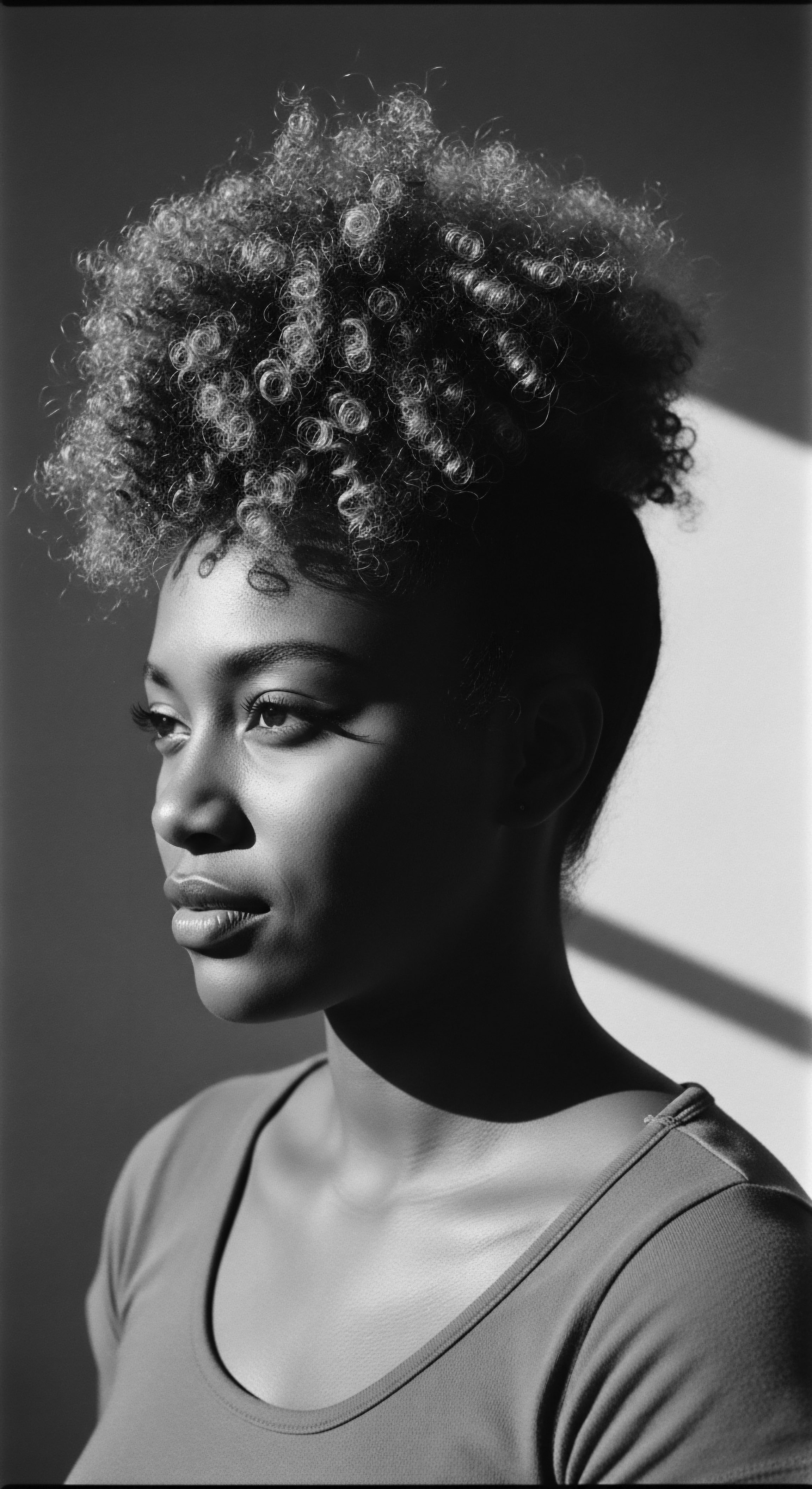
Academic
The academic meaning of Modern Care transcends a superficial understanding of product application; it encompasses a sophisticated interpretation of textured hair biology, cultural anthropology, and the enduring psychosocial dimensions of identity, particularly within Black and mixed-race communities. This advanced perspective views Modern Care as the systematic engagement with hair’s unique structural properties, informed by cutting-edge scientific research, yet perpetually grounded in the profound, often resilient, heritage of Black and mixed-race hair experiences. It is a critical examination of how contemporary practices reflect, refine, or sometimes challenge the ancient wisdom that has guided hair care for centuries. This intellectual inquiry demands a rigorous approach, synthesizing data from diverse fields to articulate a comprehensive understanding of hair’s true significance.

The Unbound Helix ❉ Decoding Hair at a Microscopic Level
Modern Care, at an academic level, necessitates a deep understanding of the biophysical characteristics of textured hair. The helical structure of highly coiled strands leads to a unique distribution of cuticular scales, which tend to be more lifted compared to straighter hair types. This configuration influences how moisture enters and exits the hair shaft, contributing to increased porosity and a propensity for dryness.
Furthermore, the points where the hair shaft bends most sharply become areas of reduced structural integrity, making textured hair more susceptible to mechanical breakage if mishandled. Scientific inquiry into these micro-level properties provides the empirical foundation for targeted care strategies, such as the use of humectants, emollients, and occlusives to manage moisture balance, or protein treatments to reinforce structural components.
The meaning of optimal Modern Care thus rests on a nuanced understanding of these biomechanical realities, moving beyond generic recommendations to precise, texture-specific interventions. Research in cosmetology and dermatology increasingly focuses on understanding the specific lipid compositions, protein structures, and environmental interactions unique to various textured hair types. This rigorous investigation aims to develop products and techniques that work synergistically with the hair’s inherent biology, rather than attempting to force it into forms that betray its natural architecture. Such scientific validation often affirms the intuitive wisdom embedded in ancestral care practices, which, through generations of trial and observation, developed methods that addressed these very biological particularities.

Ancestral Practices and Scientific Validation
A striking intersection of ancestral wisdom and modern scientific insight can be observed in the widespread use of botanical ingredients. Ethnobotanical studies have documented numerous plant species traditionally employed for hair health across African communities. For example, a survey of plants used for hair care in Karia ba Mohamed, Northern Morocco, identified 42 plant species across 28 families, with significant use of ingredients like Lawsonia Inermis (Henna) for strengthening and coloring, and Origanum Compactum (Zatar) for fortifying hair and combating loss.
These plants, often prepared as infusions, decoctions, or pastes, were chosen for their observed effects on hair growth, strength, and scalp health. Modern phytochemistry now explores the active compounds within these traditional remedies, such as polyphenols, flavonoids, and essential fatty acids, which can offer antioxidant, anti-inflammatory, or moisturizing benefits.
Modern Care academically links the enduring wisdom of ancestral practices to rigorous scientific validation, affirming traditional remedies through contemporary understanding.
The delineation of Modern Care also examines the psychosocial dimensions of hair. Hair has historically served as a canvas for social and political commentary. In societies where identity was deliberately stripped, hair became a profound symbol of resilience and cultural continuity.
During the transatlantic slave trade, millions of Africans were forcibly removed from their homelands, their heads often shaved as a systematic act of dehumanization. This violent disruption aimed to erase the intricate cultural meanings of hair, which in pre-colonial African societies, served as a sophisticated communication system indicating tribe, status, age, and marital standing.
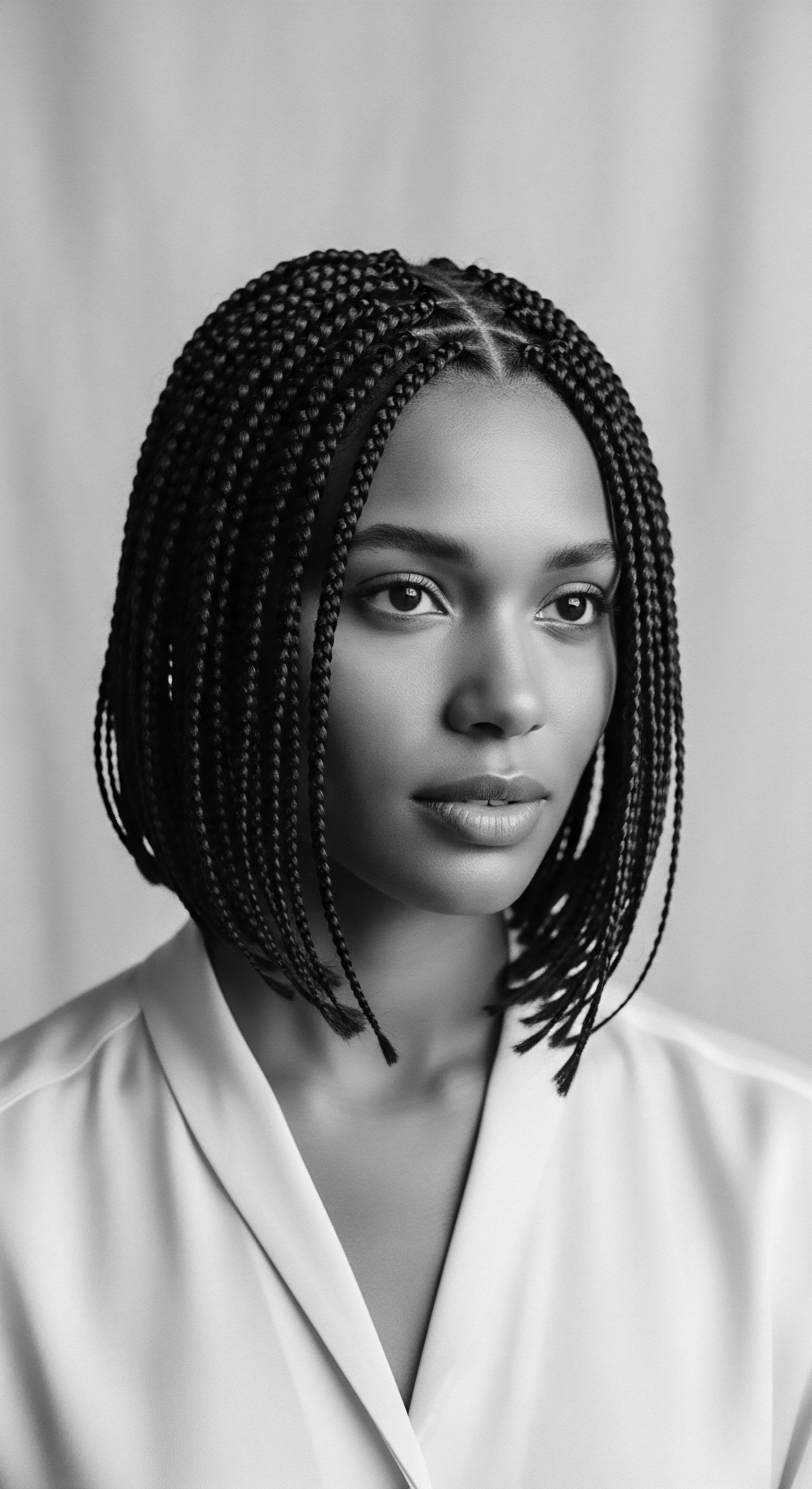
The Unbroken Lineage ❉ Hair as a Narrative of Resistance
The academic meaning of Modern Care for textured hair finds a powerful illustration in narratives of resistance, where hair transcended personal adornment to become a tool for survival and collective agency. Consider the extraordinary accounts of enslaved African women who, particularly in regions like Colombia and Brazil, intricately braided seeds and even escape maps into their hair. This historical example is rigorously documented by scholars exploring the covert forms of resistance practiced by enslaved populations. The act of braiding, a communal and culturally significant practice in Africa, transformed into a clandestine conduit for information, preserving both life and cultural memory in the face of unspeakable cruelty.
For instance, some historical accounts suggest that African women, especially those familiar with agriculture from their homelands, would braid rice seeds into their hair before forced voyages across the Middle Passage. This small, yet profound act of concealment was a desperate attempt to carry a piece of their sustenance and heritage into an unknown future, offering a glimmer of hope for survival and the possibility of planting new life in foreign soil. The cornrow patterns themselves, beyond concealing precious cargo, reportedly served as topographical maps, detailing routes to freedom for those seeking to escape the brutal confines of plantations.
This deliberate encoding of vital intelligence within a seemingly innocuous hairstyle represents an unparalleled instance of human ingenuity and cultural tenacity. The practice was not simply about styling; it was a complex system of non-verbal communication, a testament to the collective determination of a people to reclaim their autonomy.
This deep historical example underscores the enduring significance of hair in Black and mixed-race experiences. It illustrates that hair care, even in its most basic or constrained forms, was never merely cosmetic. Instead, it was inextricably linked to identity, survival, resistance, and the transmission of knowledge across generations.
The academic study of Modern Care acknowledges these layers of meaning, recognizing that present-day preferences for natural textures and protective styles often echo these ancestral acts of self-preservation and communal solidarity. The very practice of hair braiding, passed down through oral traditions and embodied knowledge, continues to be a living connection to this profound heritage.
Furthermore, the emergence of Black-owned beauty enterprises, like those founded by Madam C.J. Walker and Annie Turnbo Malone in the early 20th century, represents a direct continuation of this lineage of self-determination. They recognized the unique needs of textured hair that were often ignored or denigrated by mainstream industries.
Their businesses not only offered tailored products but also provided economic avenues and fostered spaces of community for Black women. These salons and beauty schools became vital social centers, offering refuge and a sense of belonging amidst widespread racial discrimination.
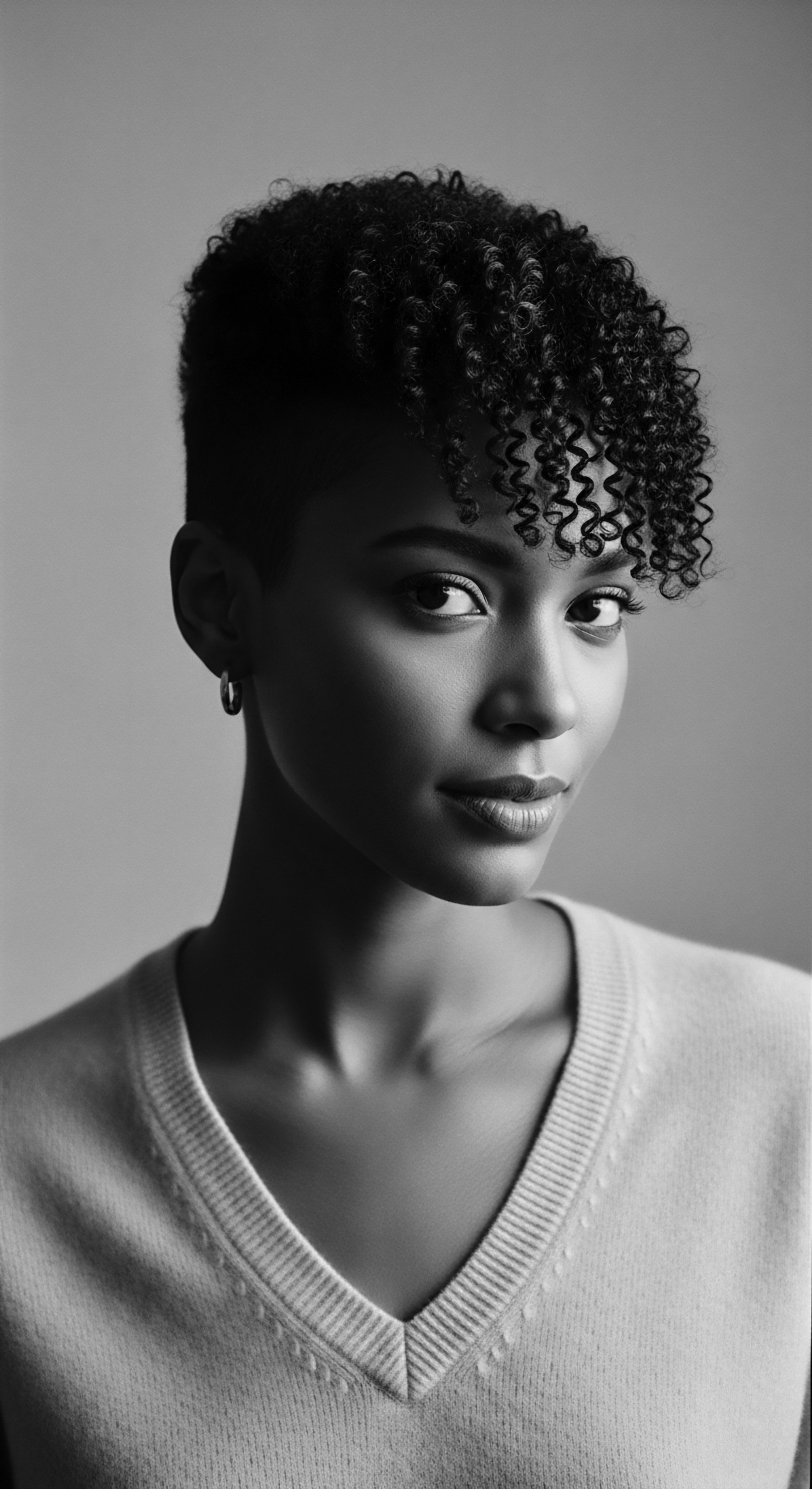
The Social Architecture of Care
The meaning of Modern Care further extends into the social architecture it fosters. Hair care for textured hair has long been a communal activity, a space for dialogue, healing, and cultural reinforcement. Black barbershops and salons, from their historical origins to contemporary iterations, serve as critical social institutions.
They are not merely places for grooming; they function as forums for political discourse, community organizing, and intergenerational mentorship. This sustained importance of communal care spaces highlights a continuity with pre-colonial African societies, where hair grooming was often a collective activity that strengthened social bonds.
The academic inquiry into Modern Care also examines the psychological dimensions of hair, particularly the impact of historical beauty standards on self-perception. The pathologizing of textured hair as “bad” or “unruly” through Eurocentric beauty ideals created psychological distress for generations. Modern Care, from this perspective, involves a reclamation and re-education, fostering acceptance and celebration of natural hair. This movement, often termed the “natural hair movement,” represents a collective psychological liberation, affirming indigenous beauty and challenging oppressive aesthetic norms.
The academic perspective on Modern Care, therefore, insists on a holistic understanding. It intertwines molecular biology with cultural history, consumer behavior with social justice, recognizing that the care of textured hair is a deeply human endeavor, rooted in ancestral wisdom and constantly evolving in response to both scientific discovery and the enduring quest for identity and self-affirmation. The historical context of hair as a marker of identity and as a means of communication and resistance during slavery amplifies the contemporary significance of natural hair acceptance and culturally competent care practices. This multifaceted approach is essential for a complete intellectual grasp of Modern Care’s profound and pervasive meaning.
- Historical Contextualization ❉ Understanding the journey of textured hair care from pre-colonial traditions, through the trials of enslavement and its aftermath, to the present day. This involves appreciating how historical adversities shaped the adaptation and resilience of care practices.
- Scientific Grounding ❉ Acquiring precise knowledge of the unique biological structure of textured hair. This includes understanding its cuticle behavior, moisture dynamics, and susceptibility to certain types of damage, informing effective, evidence-based interventions.
- Cultural Competency ❉ Recognizing the diverse cultural meanings and social functions of hair across various Black and mixed-race communities. This awareness helps in respecting individual choices and collective expressions of identity.
- Psychosocial Awareness ❉ Understanding the psychological impact of historical and contemporary beauty standards. This element guides approaches that support positive self-perception and mental well-being alongside physical hair health.
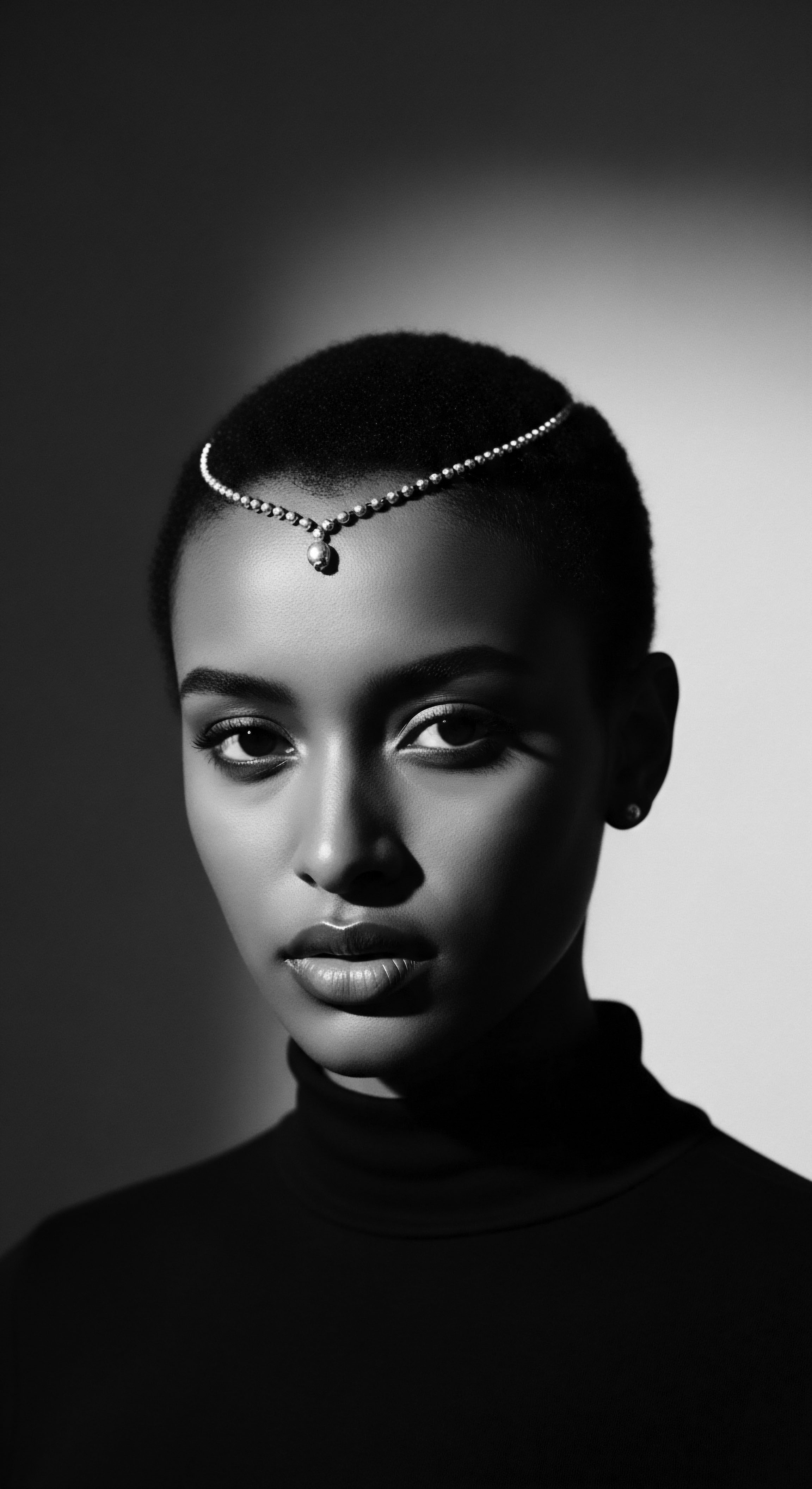
Reflection on the Heritage of Modern Care
As we trace the intricate contours of Modern Care, a profound meditation on textured hair, its heritage, and its care unfolds. This journey reveals that hair is not merely a biological attribute; it serves as a living, breathing archive of human experience, resilience, and creative spirit. From the elemental biology that shapes each coil and curl to the sophisticated language of ancestral braids, the story of textured hair is one of enduring connection to the source.
The wisdom of our forebears, who intuitively understood how to tend to their crowning glory with botanicals and gentle hands, echoes in our contemporary scientific discoveries. This unbroken lineage reminds us that the quest for healthy, vibrant hair is a timeless endeavor, woven into the very fabric of identity and community.
The Tender Thread, a narrative of survival and adaptation, reveals how hair care transformed from celebration to a quiet act of defiance during the cruel epochs of history. In the face of erasure, hair became a silent messenger, a map to freedom, and a vessel for seeds of hope. The collective memory of these acts of ingenuity inspires a deeper reverence for every strand, understanding that it carries the whispers of generations.
The emergence of trailblazing entrepreneurs who built industries around the specific needs of Black hair further solidifies this legacy, demonstrating how self-determination and economic empowerment are inextricably linked to culturally relevant care. These historical figures laid foundations for a Modern Care that acknowledges the past while innovating for the future, providing spaces where self-care and community flourish.
The Unbound Helix, our deepest intellectual inquiry, illustrates that Modern Care is a vibrant, evolving concept, continually enriched by both scientific rigor and profound cultural understanding. It acknowledges the biomechanical uniqueness of textured hair while celebrating its artistic and communicative power. The present moment invites us to apply this integrated knowledge, not to simply maintain hair, but to honor its storied past, affirm its present beauty, and safeguard its future. For in every curl, every coil, and every wave, lies the soul of a strand—a testament to identity, an act of remembrance, and a vibrant declaration of belonging, passed down from the distant past, alive in our hands today, and destined to inspire generations yet to come.
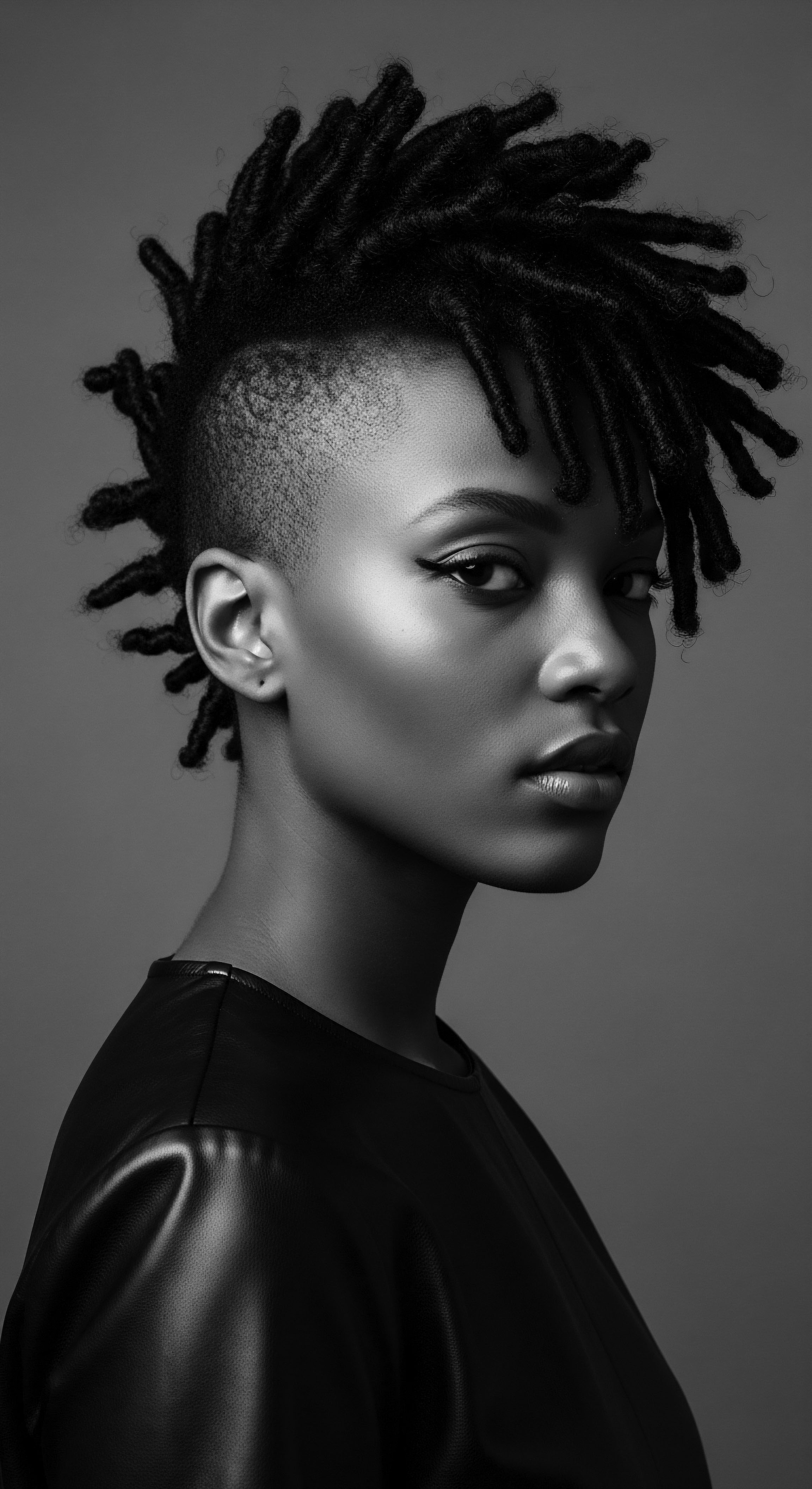
References
- Collins, Aunt Tildy. Born in Slavery ❉ Slave Narratives from the Federal Writers’ Project. Library of Congress, 1941.
- Durham, Erica. “The History Of Black Hair In America.” Refinery29, 23 Feb. 2021.
- Leath, Jennifer. Interview by The Queen’s Journal. “History, identity, and community ❉ The significance of Black hair.” The Queen’s Journal, 7 Feb. 2025.
- BLAM UK CIC. “The history of Black Hair.” BLAM UK CIC, 15 Sept. 2022.
- Library of Congress. “Heavy is the Head ❉ Evolution of African Hair in America from the 17th c. to the 20th c.” Library of Congress.
- Patton, Tracey Owens. “Tangled Roots ❉ Decoding the history of Black Hair.” CBC Radio, 28 Jan. 2021.
- Pereira, M. E. & Bousta, D. “Ethnobotanical Survey of Medicinal Plants used in the Treatment and Care of Hair in Karia ba Mohamed (Northern Morocco).” ResearchGate, 1 Mar. 2024.
- Toro, Maria. “African Slaves Used Braids to Communicate Escape Routes in Colombia.” Ancient Origins, 30 Nov. 2022.
- University of Salford Students’ Union. “The Remarkable History Behind Black Hairstyles.” University of Salford Students’ Union, 29 Oct. 2024.
- Walker, A’Lelia Bundles. “Madam C.J. Walker ❉ A pioneer in the hair industry.” HOLA, 13 Oct. 2023.
- Walker, A’Lelia Bundles. “In Black Hair Care, Innovation Does Not Exist Without History.” Fashionista, 19 Apr. 2022.
- Watson, A. “The History of Black People Braiding Their Hair.” The History Of Black People Braiding Their Hair, 23 May 2023.
- Zazou Hair Salon and Academy. “Black History Month ❉ Viola Desmond Hairdresser and Cosmetics Mogul.” Zazou Hair Salon and Academy, 6 Feb. 2023.
